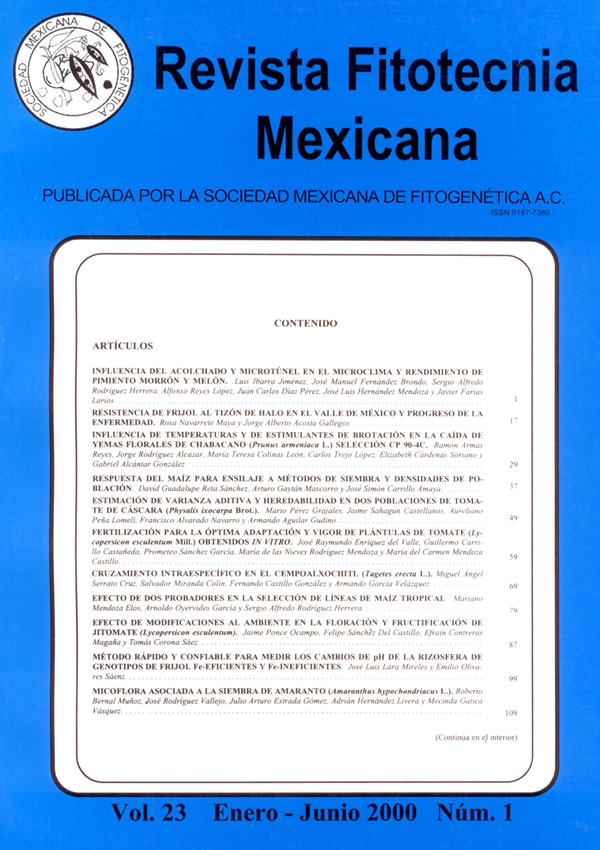EFECTO DE MODIFICACIONES AL AMBIENTE EN LA FLORACIÓN Y FRUCTIFICACIÓN DE JITOMATE (Lycopersicon esculentum)
Contenido principal del artículo
Resumen
Se realizó un experimento bajo invernadero de vidrio en donde se manejaron plántulas de jitomate (Lycopersicon esculentum, Mill) cultivar “Solarset”, para evaluar el efecto de tratamientos de baja temperatura nocturna (10 oC) durante 10 días, luz suplementaria (75 µmol.m-2.s-1 con luz fluorescente o 90 µmol.m-2.s-1 con luz fluorescente más incandescente) cinco horas por noche durante 10 días, y poda de la quinta hoja, aplicados a plántulas en semillero durante el periodo de iniciación de la primera inflorescencia, sobre el número de flores por inflorescencia (NFI), el porcentaje de plantas con la primera inflorescencia ramificada (PIR), el rendimiento y sus componentes primarios. Se utilizó un diseño de parcelas subdivididas en bloques al azar con cuatro repeticiones. No hubo diferencias significativas entre tratamientos para las variables estudiadas; sin embargo, se registró un alto NFI (6.75) y un alto porcentaje de PIR (30 %) en comparación con otros trabajos similares, indicando que las condiciones del semillero fueron muy favorables para la iniciación de la inflorescencia (incluso para el tratamiento testigo). Las hojas de plantas tratadas con luz suplementaria, realizaron fotosíntesis adicional a la del día que compensó las pérdidas de CO2 por su respiración durante la noche; sin embargo, la tasa de fotosíntesis durante el día presentó una tendencia a ser mayor en las hojas de las plantas sin luz suplementaria durante la noche, de tal manera que la cantidad neta de fotoasimilados producidos por día resultó similar a la de los tratamientos de luz suplementaria.

